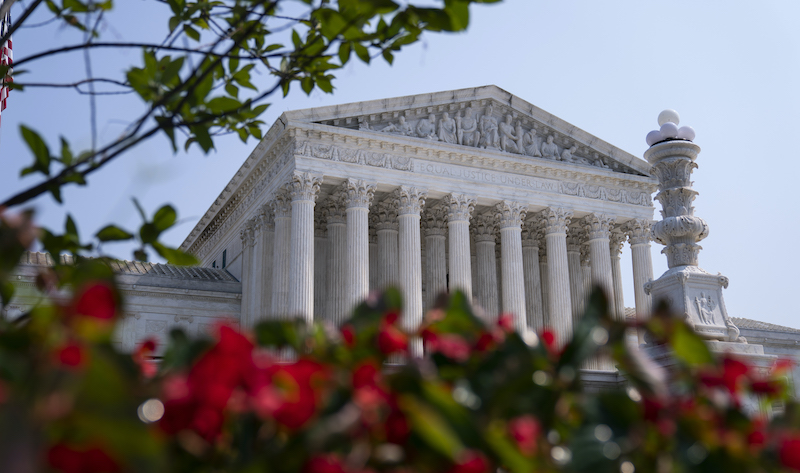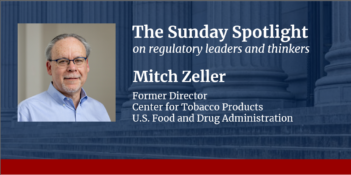
An upcoming SCOTUS case provides an opening for greater dispute over the power of regulatory agencies.
After the Supreme Court’s decision in West Virginia v. Environmental Protection Agency, administrative law experts again asked the perennial question: Is Chevron deference dead? Although we may not have a definitive answer for some time, the upcoming Supreme Court term promises more fodder for the discussion.
Consider Sackett v. EPA, scheduled for argument on October 3. In Sackett, the Court is asked to clarify when wetlands are “waters of the United States” for the purposes of Clean Water Act (CWA) jurisdiction. The Environmental Protection Agency (EPA) has asserted jurisdiction over a portion of the Sacketts’ land that is separated from a lake on the surface but is connected to the lake below the surface.
The Sacketts ask the Court to adopt a version of a test used by a plurality of the Court in its 2006 Rapanos v. United States decision. As the Sacketts describe Rapanos, wetlands are within the jurisdiction of the CWA only when they have a continuous surface connection to other regulated waters.
The United States seeks an alternative, broader test proposed in Justice Kennedy’s Rapanos concurrence. In this view, wetlands adjacent to regulated waters can themselves be regulated even without a surface connection to regulated waters, provided they have a “significant nexus” to them.
The question before the Court is one of statutory interpretation—and, accordingly, the parties rest their arguments on many of the traditional tools of interpretation. Among them, the parties parry over textual canons, such as the rejected proposal rule (which suggests that courts should avoid interpretations found in statutory language previously rejected by the legislature) and the ejusdem generis canon (which suggests that a general term’s meaning should be limited by specific examples that precede it). The parties also disagree on the application of substantive canons, such as the constitutional avoidance canon and the traditional state functions doctrine.
More provocatively, and despite the technical nature of the CWA, the Sacketts ask the Court to interpret the statutory term “waters” to reflect the way it is used in “ordinary conversation,” a dubious practice that I have criticized elsewhere.
And lurking in the background of this salvo of arguments over statutory interpretation is the issue of Chevron deference—that is, when and whether courts should defer to agency interpretations of statutes. Indeed, the question in Sackett is one that, traditionally, would be susceptible to the Chevron framework. It is a question of interpretation of the CWA by agencies entrusted with its interpretation—EPA and the U.S. Army Corps of Engineers—and formulated after decades of experience administering the statutory language.
Nevertheless, Chevron was barely mentioned by the Sacketts, who instead focused on other tools of interpretation. And the United States invoked Chevron deference only briefly and only as a back-up argument.
Downplaying Chevron in the briefs is not surprising. The United States, aware that it can no longer take the Court’s reliance on Chevron for granted, takes the safer course by emphasizing tools of interpretation other than deference. In this way, the United States gives the Court the option of siding with its preferred result no matter whether its members are inclined to decide the case at Chevron step one, Chevron step two, or outside of the Chevron framework altogether. And the Sacketts, too, are more likely to prevail if the Supreme Court interprets the CWA without deference to agency views, whether or not it uses the Chevron framework.
But, although they do not overtly ask the Court to overturn Chevron, the Sacketts implicitly ask the Court to apply a standard that is starkly at odds with it. Specifically, they imply that the Court does not owe any deference to EPA’s interpretation of the CWA because the interpretation is not the “most reasonable” interpretation of the statute.
This argument, that deference depends on the agency’s interpretation being not just reasonable—as standard Chevron doctrine would suggest—but being the most reasonable one, is potentially revolutionary. Indeed, Chevron deference is often premised on the notion that there can be more than one reasonable interpretation of a statute. And it is precisely because there can be more than one reasonable interpretation that deference to the agency is justified when the statute is silent or ambiguous on the interpretive question.
The Sacketts’ view, that Chevron deference is warranted only when the agency’s interpretation is the most reasonable one, would limit Chevron’s reach. Even modestly, it suggests a comparative analysis, in which a court defers to an agency’s view only if it first finds that the agency’s interpretation is better than other proffered interpretations—and perhaps better than all other possible interpretations. This reading would eliminate Chevron deference for interpretations—even reasonable ones—when a better interpretation can be posited.
More strikingly, it is easy to imagine a court’s search for the “most reasonable” interpretation shading into a search for the “best” interpretation. On this reading, the court would defer to an agency interpretation only if the agency already has reached the best interpretation—that is, the interpretation that the court believes to be correct. This reading arguably eliminates Chevron deference altogether. After all, if a court “defers” to the agency’s view only when it agrees with the agency’s interpretation, then deference appears to be doing no analytical work. Under either of these views, Chevron easily could be described as mortally wounded, if not well and truly dead.
Of course, nothing requires the Supreme Court to adopt the Sacketts’ suggestion to limit Chevron by adopting their “most reasonable” interpretation standard. Indeed, the Court could decide the case for either party without addressing it at all. But, given the presence of this argument in the briefs, and recent hints of Chevron’s vulnerability, those anxious about the fate of Chevron should pay close attention to the upcoming Sackett oral argument and the Court’s ultimate decision.




